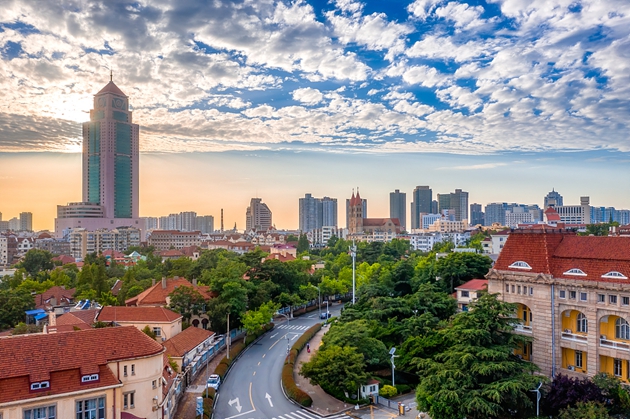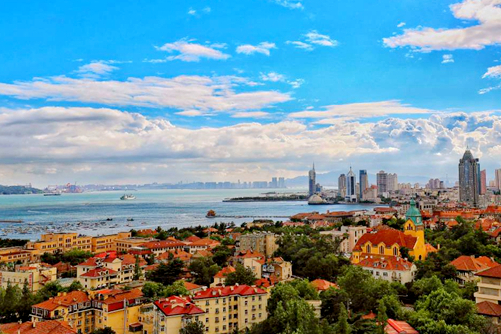Qingdao becomes a 'city XL'
The permanent resident population of Qingdao's urban area has reached 5.29 million, 167,800 more than in the previous year. It is now the 15th most populous city in the country and has been designated a "city XL", said local officials.
Cities XL are cities with a permanent urban population between 5 and 10 million. They include Chengdu, Nanjing, Hangzhou, Zhengzhou, and Shenyang.
A megacity is defined by the United Nations as a city with a population of 10 million or more. In China, this includes Beijing, Shanghai, and Shenzhen.

A view of Qingdao, Shandong province [Photo/VCG]
Official data show that the developed area of Qingdao is 758.16 square kilometers in size, an increase of 43.09 square kilometers over the previous year and ranking 11th in China.
A developed area is the region in a city with municipal public facilities that can fulfill the functions of a city. It is an important indicator of a city's degree of urbanization.
Over the past ten years, the urban area of Qingdao has expanded rapidly, according to local authorities.
From 2010 to 2019, the permanent urban resident population of the city grew from 2.76 million to 5.29 million, an increase of 92 percent, while its developed area grew from 282.33 square kilometers to 758.16 square kilometers, an increase of 169 percent.
Over the past several years, Qingdao has relaxed restrictions on household registration, especially for key population groups such as university and vocational college graduates. It has launched a series of policies to attract talent and help them settle in the city.
It has also been making efforts to pursue a new type of urbanization, and is improving public facilities and services in county and urban district seats in response to an influx of people from rural areas.
In addition, the city has been renovating old urban residential communities and encouraging the development of community services such as elderly home care, meal provision, and cleaning services.









 Play
Play  Play
Play